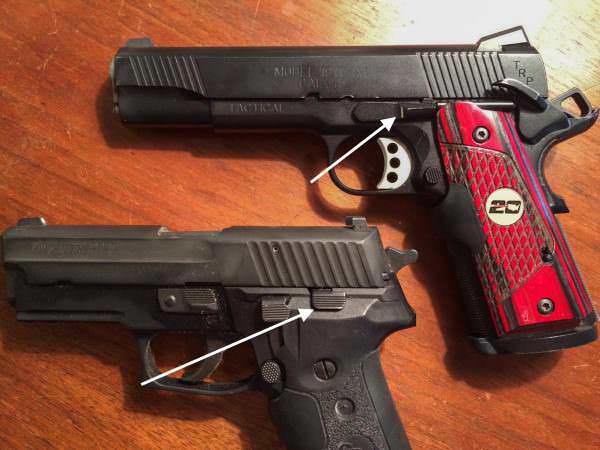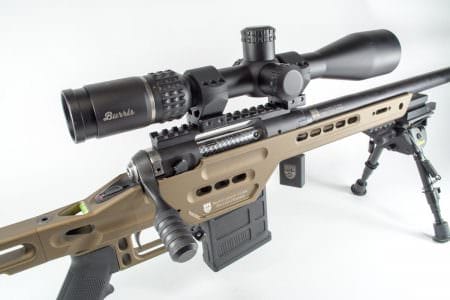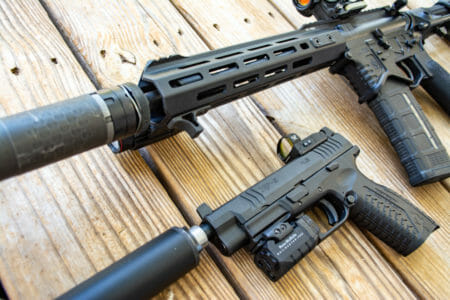By Tom McHale


USA –-(Ammoland.com)- Have you ever noticed that when two people sit behind a desk on TV after 8pm, they can’t even seem to agree on anything, like whether or not Howard Stern has bad breath?
Top shooting instructors have the same issue, although I don’t think they spend much time discussing Howard’s oral hygiene. Far too often, they disagree with each other on basic shooting fundamental techniques. If you’ve been to more than one class or training event, you know the drill.
The Weaver stance is the only possible way you can hope to win a gun fight. All the best gunfighters know this, and Chuck Norris invented it.
vs.
A million so years of human fight response will position your body in a stance compatible with Isosceles so that shooting position is the only possible way to win a gun fight. Training your body to do otherwise is a waste of time and an insult to human instinct.
This is just one example. There are many others. Should you or shouldn’t you practice trigger reset? One eye open or both? Revolver or semi auto? I won’t even mention the 9mm vs. 45 debate. Oops, I just did. Or the Glock vs 1911, oops did it again!
The fact that big time instructors disagree with each other presents a real problem for mere mortals. Which opinion do we listen to? What do you do you when you learn a technique at Little Gun Tykes Academy, then when you take a class at Tactical Harmony Learning Center and Day Care, they teach you to do something the opposite way?
One subject of professional disagreement that’s crossed my instruction curriculum recently is the correct way to release the slide on a semi-automatic pistol. Do you use that handy lever on the side or your support hand to snap the slide back and release it?
Recently, I attended a tactical pre-school program at Academi run by a team of world-class instructors. One of the many things they taught was always to use the slide release lever after a magazine change. The benefit to using the slide release lever is speed. Your grip stays put, so there is minimal unnecessary hand motion. By minimizing movement, you maximize speed.
Note: I know it’s a slide lock lever, but for the context of this article, I’ll refer to it as a slide release lever.
I get that and agree with all the reasons in favor of using the slide release to chamber a round. But I don’t do it that way.
It’s not that I disagree with my recent expert instruction. Obviously, these guys know what they’re talking about. It’s just that my circumstances are different than what those dudes are accustomed to. Like many issues where there are multiple equally credible opinions on the correct and only way to do something, it usually depends on other factors. What is “right” or “best” for one person may not be for another depending on their unique situation.
Here area couple of reasons I manually rack the slide with my support hand rather than default to the slide release:
Racking the Slide Works on any Semi-Automatic
The old axiom, “Beware of the man who only has one gun, for he certainly knows how to use it” is absolutely true. The guys that taught my recent class are combat pros, and while they certainly capable of using many guns, they have a default type for self-defense or combat use. When you’re using the same gun all the time in practice, you can optimize each and every movement to eliminate every wasted motion. Your brain and finger know exactly where that slide release lever is and how much pressure it takes to operate.
However when you shoot different guns on a regular basis, those ingrained motor skills do not apply – at least not as smoothly. The slide release lever on a 1911 is in a difference place than on a Sig Sauer P226. Heck, on a 1911, I can’t reach the slide release lever with my firing hand, so I operate it with my support hand. On the Sig, it’s positioned right where the safety is on a 1911, so I use my firing hand thumb to release it.

Rather than developing a habit to reach for something that may or may not be there for the gun in hand, I prefer to develop a habit of racking the slide with my support hand. That technique works on any gun, whether it’s one I am reviewing, one of my wife’s guns or that of a friend.
So when the Zombies come, and we’re all scavenging for whatever guns are lying around, your technique will work right off the bat with virtually any firearm you find or acquire from recently devoured traveling companions.
Malfunction Drill Habit Building
In my view, another benefit to the racking the slide technique is that it’s part of the universal malfunction drill. If your gun doesn’t go bang, racking the slide, after a vigorous tap on the magazine, is the first thing you should do. Tap, rack, evaluate, right? I like that the basic steps are consistent whether you are loading a fresh magazine or figuring out why your gun didn’t go bang with a full magazine. In either case, you are slapping the magazine into place, then racking the slide. It’s one motion to learn, whatever the reason for that silent click.
With all that said, is there any reason to not use the slide release lever?
That depends. If the two issues I care about are relevant to you, perhaps you’re better off using the support hand rack method. If you use one gun or one type of gun, make that slide release lever your b&tch. It’s absolutely faster and smoother. You can also chamber a round while moving your gun into a proper sight picture. With the two-handed racking method, you can’t start to acquire a sight picture until the round is chambered, and you recover your firing grip.
I’m not advocating one method over the other. I’m simply stating my reasons for accepting the drawbacks of the support hand racking method. To me, the benefits of multi-gun readiness and consistency of motion for reloading and failure to fire drills outweigh the speed disadvantage. But that’s just me. Your situation may be different. And that’s the whole point. You’ll hear opposite opinions now and then from equally credible instructors. That’s OK. Consider their reasons, and go with the solution that makes the most sense in your specific case.
Comments are now open let the debate begin…
About
Tom McHale is the author of the Insanely Practical Guides book series that guides new and experienced shooters alike in a fun, approachable, and practical way. His books are available in print and eBook format on Amazon. You can also find him on Google+, Facebook, Twitter and Pinterest.





I prefer to use the slide release with my support hand. For me it’s “muscle memory” since I also use my support hand to release the BCG on my AR. I say there’s no right or wrong on this, pick a method that works for you, and practice it, practice it, practice it. Just don’t go and say to others, such as myself, that I’m wrong in my methodology. Healthy debate is great, but being a know-it-all isn’t. My 2-cents worth.
My carry gun manual ( a Kahr CW40) says use the slide release to reduce the chances of Failure-to-Feed.
Constant use of the slide lock (aka “release”) lever could eventually cause the wearing away of the slide metal, causing a slide lock failure. We have developed muscle memory with one system – usually using the support hand, so why change to the thumb release method? In combat, we will always revert to what we originally learned.
I prefer the release lever, HOWEVER, on my RIA 1911 if it’s not ‘warmed up’ my wonderfully tight slide takes a second hand to release. Once I’ve fired about 10 rds, it’s perfect. I don’t want to reduce accuracy by ‘loosening’ the slide, so if the weapon is cold I automatically use my left hand to rack the slide. Otherwise I just love the release lever since my old Army days when the Colt 1911’s were sloppy as hell to begin with! Tom Clark
Other reasons to rack the slide: By using the slide release lever, some say it increases wear on the part of the lever that retains the slide. Not sure if that’s 100% accurate or not, but it’s a point. Second, and more important in my mind, is that by racking the slide you increase the chances of the gun properly going into battery. I have seen newer pistols have incomplete battery conditions when people use the slide release. When they rack the slide, they are adding another 1/8 to 1/4 inch compression on the spring, which puts a stronger, more… Read more »
I used to always rack the slide as opposed to using the slide release lever. It’s how my dad taught me to do it. But, a couple of years ago, I bought a Kahr CM9. The manual states that you should always use the slide release, or it might not go into battery. I’ve tried racking the slide a few times, when it’s already locked open, but just like the manual says, it does not go into battery. The only way for me to do it reliably, is to use the slide release lever. Unfortunately it appears that always using… Read more »